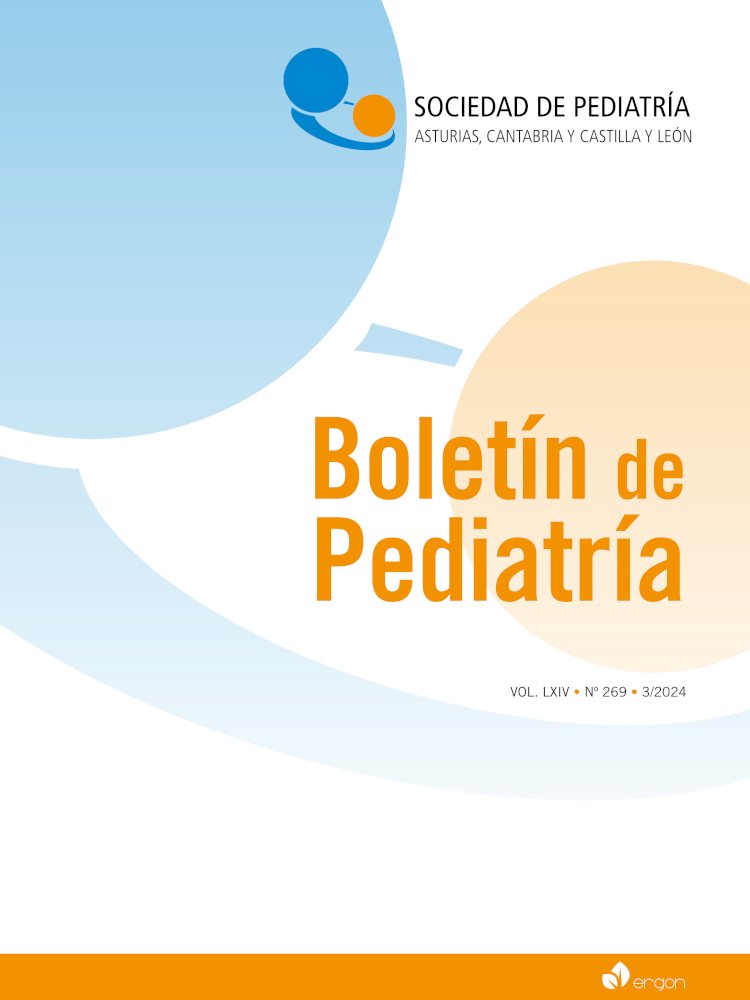Resumen
Introducción. La leche humana (LH) es el alimento ideal para los lactantes. A corto plazo, reduce infecciones respiratorias y otitis media, y a largo plazo, mejora el desarrollo cognitivo y reduce el riesgo de enfermedades metabólicas como la obesidad. La LH es, además, crucial para el desarrollo de la microbiota del recién nacido. Mientras que una microbiota equilibrada se asocia con mejores resultados de salud, la existencia de disbiosis se asocia al desarrollo de enfermedades crónicas y disfunciones del sistema inmune.
Desarrollo. Dos componentes fundamentales de la LH son su propia microbiota y los oligosacáridos (HMOs). Los HMOs varían en cantidad y composición a lo largo de la lactancia y entre sus numerosas funciones, destaca su papel como prebióticos. Dependiendo de la diferente capacidad de las bacterias para metabolizar los HMOs, estos inducen selectivamente el desarrollo de especies bacterianas concretas, entre las que destaca Bifidobacterium infantis. La LH aporta tanto HMOs como B. infantis, lo que la convierte en un simbiótico. Ambos componentes aportan efectos beneficiosos de forma individual, pero además aportan efectos sinérgicos.
Conclusiones. La LH es el mejor alimento que puede recibir un lactante por sus múltiples beneficios, alguno de los cuales están basados en su efecto sobre la microbiota intestinal del mismo. La presencia de HMOs y la propia microbiota de la LH, con bacterias como B. infantis, son determinantes en la consecución de dichos beneficios.
Referencias
ESPGHAN Committee on Nutrition; Agostoni C, Braegger C, Decsi T, Kolacek S, Koletzko B, Michaelsen KF, et al. Breastfeeding: A commentary by the ESPGHAN Committee on Nutrition. J Pediatr Gastroenterol Nutr. 2009; 49(1): 112-25. https://doi.org/10.1097/MPG.0b013e31819f1e05
Szyller H, Antosz K, Batko J, Mytych A, Dziedziak M, Wrzesniewska M, et al. Bioactive components of human milk and their impact on child's health and development, literature review. Nutrients. 2024; 16(10): 1487. https://doi.org/10.3390/nu16101487
Jeong S. Factors influencing development of the infant microbiota: from prenatal period to early infancy. Clin Exp Pediatr. 2022; 65(9): 439-447. https://doi.org/10.3345/cep.2021.00955
Sekirov I, Russell SL, Antunes LC, Finlay BB. Gut microbiota in health and disease. Physiol Rev. 2010; 90(3): 859-904. https://doi.org/10.1152/physrev.00045.2009
Pannaraj PS, Li F, Cerini C, Bender JM, Yang S, Rollie A, et al. Association between breast milk bacterial communities and establishment and development of the infant gut microbiome. JAMA Pediatr. 2017; 171(7): 647-6=54. https://doi.org/10.1001/jamapediatrics.2017.0378
Zivkovic AM, German JB, Lebrilla CB, Mills DA. Human milk glycobiome and its impact on the infant gastrointestinal microbiota. Proc Natl Acad Sci U S A. 2011; 108(Suppl 1): 4653-8. https://doi.org/10.1073/pnas.1000083107
McGuire MK, Meehan CL, McGuire MA, Williams JE, Foster J, Sellen DW, et al. What's normal? Oligosaccharide concentrations and profiles in milk produced by healthy women vary geographically. Am J Clin Nutr. 2017; 105(5): 1086-100. https://doi.org/10.3945/ajcn.116.139980
Plows JF, Berger PK, Jones RB, Alderete TL, Yonemitsu C, Najera JA, et al. Longitudinal changes in human milk oligosaccharides (HMOs) over the course of 24 months of lactation. J Nutr. 2021; 151(4): 876-82. https://doi.org/10.1093/jn/nxaa427
Thum C, Wall CR, Weiss GA, Wang W, Szeto IM-Y, Day L. Changes in HMO concentrations throughout lactation: Influencing factors, health effects and opportunities. Nutrients. 2021; 13(7): 2272. https://doi.org/10.3390/nu13072272
Ray C, Kerketta JA, Rao S, Patel S, Dutt S, Arora K, et al. Human milk oligosaccharides: The journey ahead. Int J Pediatr. 2019; 2019: 2390240. https://doi.org/10.1155/2019/2390240
Hill C, Guarner F, Reid G, Gibson GR, Merenstein DJ, Pot B, et al. Expert consensus document. The International Scientific Association for Probiotics and Prebiotics consensus statement on the scope and appropriate use of the term probiotic. Nat Rev Gastroenterol Hepatol. 2014; 11(8): 506-14. https://doi.org/10.1038/nrgastro.2014.66
Lewis ZT, Totten SM, Smilowitz JT, Popovic M, Parker E, Lemay DG, et al. Maternal fucosyltransferase 2 status affects the gut bifidobacterial communities of breastfed infants. Microbiome. 2015; 3: 13. https://doi.org/10.1186/s40168-015-0071-z
Ward RE, Niñonuevo M, Mills DA, Lebrilla CB, German JB. In vitro fermentability of human milk oligosaccharides by several strains of bifidobacteria. Mol Nutr Food Res. 2007; 51(11): 1398-405. https://doi.org/10.1002/mnfr.200700150
Davis EC, Castagna VP, Sela DA, Hillard MA, Lindberg S, Mantis NJ, et al. Gut microbiome and breast-feeding: Implications for early immune development. J Allergy Clin Immunol. 2022; 150(3): 523-34. https://doi.org/10.1016/j.jaci.2022.07.014
Berni Canani R, Di Costanzo M, Leone L. The epigenetic effects of butyrate: potential therapeutic implications for clinical practice. Clin Epigenetics. 2012; 4(1): 4. https://doi.org/10.1186/1868-7083-4-4
Swanson KS, Gibson GR, Hutkins R, Reimer RA, Reid G, Verbeke K, et al. The International Scientific Association for Probiotics and Prebiotics (ISAPP) consensus statement on the definition and scope of synbiotics. Nat Rev Gastroenterol Hepatol. 2020; 17(11): 687-701. https://doi.org/10.1038/s41575-020-0344-2
McDonnell L, Gilkes A, Ashworth M, Rowland V, Harries TH, Armstrong D, et al. Association between antibiotics and gut microbiome dysbiosis in children: systematic review and metaanalysis. Gut Microbes. 2021; 13(1): 1-18. https://doi.org/10.1080/19490976.2020.1870402
Dai DLY, Petersen C, Hoskinson C, Del Bel KL, Becker AB, Moraes TJ, et al. Breastfeeding enrichment of B. longum subsp. infantis mitigates the effect of antibiotics on the microbiota and childhood asthma risk. Med. 2023; 4(2): 92-112.e5. https://doi.org/10.1016/j.medj.2022.12.002

Esta obra está bajo una licencia internacional Creative Commons Atribución-NoComercial 4.0.
Derechos de autor 2024 Boletín de Pediatría
